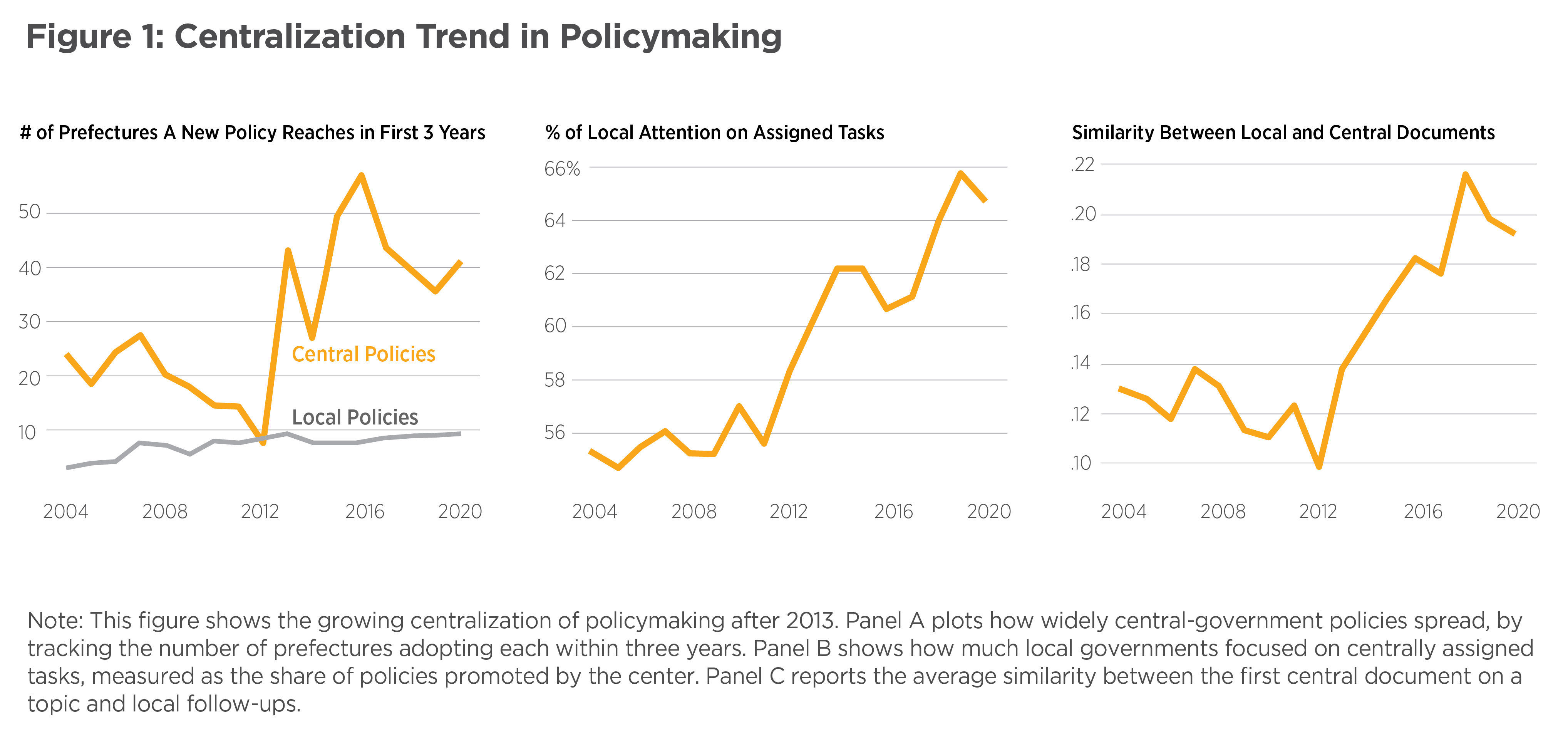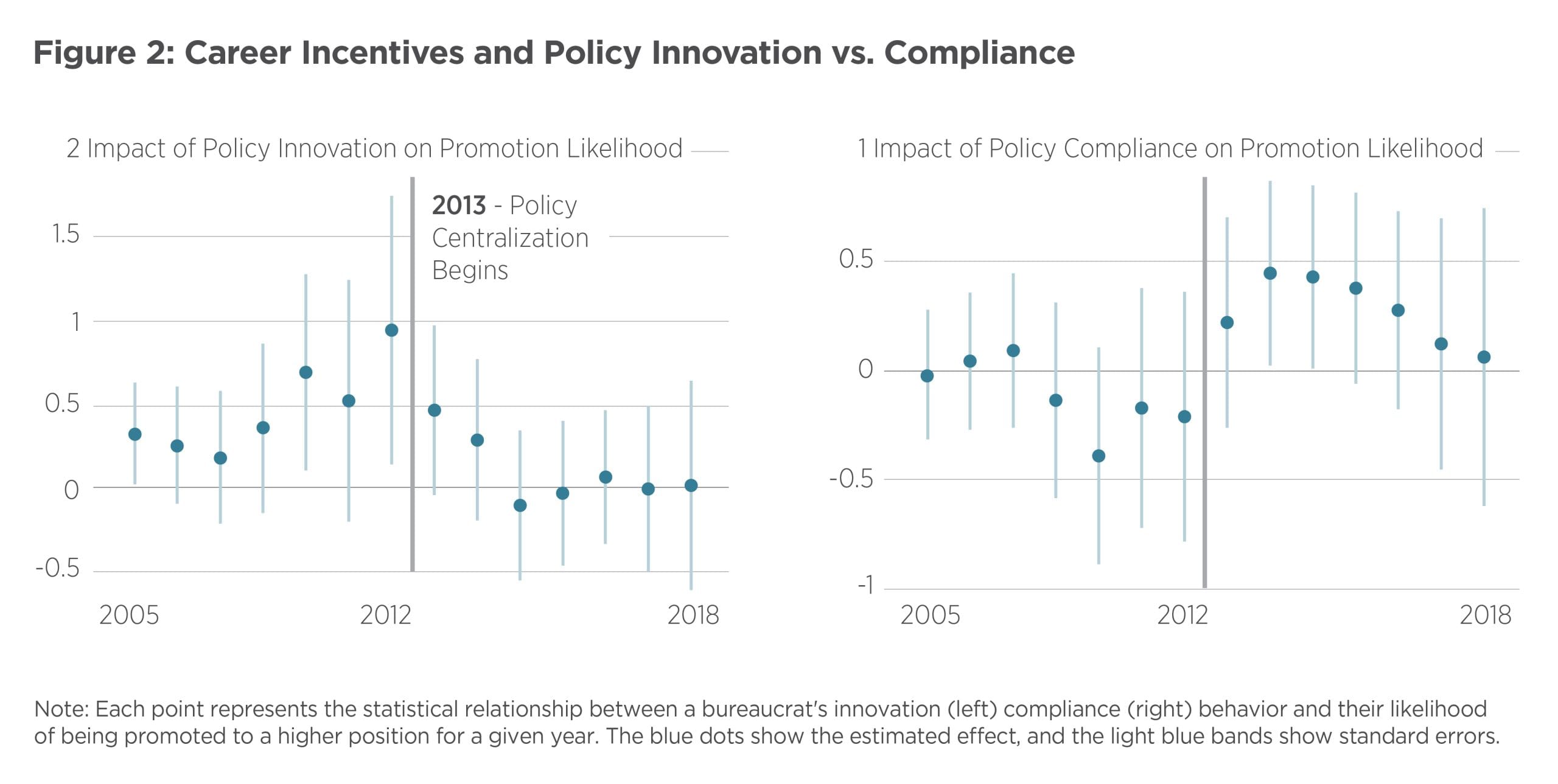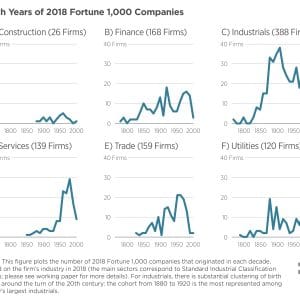A fundamental question in political economy concerns the appropriate level for making policy decisions. While top-down policy promotion may streamline adoption, internalize spillovers, and enhance efficiency, it often sacrifices the local suitability that bottom-up policy initiatives provide. This tension is especially relevant in governing large polities with high levels of regional heterogeneity. Despite its theoretical importance, studying the centralization of policymaking remains empirically challenging because it requires systematically tracing the origin and diffusion patterns of all policies across layers of government hierarchy.

In this paper, the authors study the centralization of policymaking in China over the past two decades, and how it affects the local suitability of policies. They investigate two key questions: what share of local governments’ policy portfolios is shaped by the central government’s direct involvement, and whether the central government’s direct involvement undermines policy suitability and effectiveness at the local level.
To study these questions, the authors compile a dataset of 422 thousand central government policy documents and 3.3 million local government policy documents and work reports. From this corpus, they identify 115,679 distinct policies implemented from 2004 to 2020 and trace their origins and vertical and horizontal diffusion patterns. For the subset of industrial policies aimed at promoting industrial growth, they also measure policy suitability and effectiveness using data on industrial output, exports, and patent filings. They construct measures of policy-locality suitability based on pre-existing regional supply chains and private firms’ ex ante investment preferences to evaluate how well policies align with local conditions.

The authors find the following:
- China’s policymaking has historically been highly decentralized, with local bureaucrats playing crucial roles in both creating new policies and spreading them. Over the past two decades, 82% of the policies appearing in local governments’ portfolios originated as local initiatives; of these, 74% diffused solely horizontally among local governments and never involved explicit central government action.
- Since 2013, policymaking has become substantially more centralized. The share of top-down policies in local governments’ portfolios has increased by 40%, the adoption rate of top-down initiatives has nearly tripled, and local replication of central policy details has more than doubled.
- This shift likely resulted from changes in local bureaucrats’ career incentives. Qualitative accounts suggest that, after Xi Jinping assumed power in late 2012, authority was rapidly consolidated within the central government, suppressing local policy initiatives and experimentation. At this time, political promotion was granted to bureaucrats who most actively implemented top-down policies rather than those who pioneered new policies as observed before.
- Locally initiated and horizontally diffused policies tend to be associated with higher ex ante local suitability and better ex post economic outcomes. Focusing on industrial policies aimed at promoting sector-specific industrial growth and innovation, the authors find that those initiated or adopted by local governments without central involvement are better aligned with local conditions, as measured by pre-existing regional supply chains and private firms’ ex ante investment preferences. In contrast, top-down industrial policies initiated or explicitly adopted by the central government show systematically weaker alignment with local conditions. Moreover, industrial policies that are better matched to local conditions prove significantly more effective, on average, in achieving policy objectives — including increased industrial output, patenting, and exports — underscoring the costs of centralization.
- Centralizing policymaking curbs strategic competition among local bureaucrats that otherwise impedes learning from peer jurisdictions. When policies are initiated and diffused locally without central government’s explicit involvement, local bureaucrats competing for the same political promotion opportunities may be reluctant to adopt policies from one another for fear of boosting their competitors’ credentials. Since local bureaucrats with similar promotion prospects are often posted to economically comparable localities, the authors find that such rivalry stifles the diffusion of local policy innovations, undermines local suitability among diffused policies, and dampens economic performance.
Centralization alleviates these distortions, since local bureaucrats no longer worry about political competitors receiving credit when they implement top-down policies. - The gains from centralization in promoting policy diffusion are outweighed by the losses from reduced policy suitability due to central intervention. Compared to the 2012 level of decentralization, the post-2013 centralization trend converted 2,562 prefecture-level industrial policies from bottom-up to top-down, with each top-down policy being 22% less suitable for local conditions than a bottom-up one. Back-of-the-envelope calculations suggest that the yearly cost of lowered policy suitability attributed to post-2013 centralization is 580 billion RMB in industrial output, 437 billion in exports and 10,486 patent filings. Meanwhile, centralization mitigates competition-induced suitability loss by 0.007 for each political rival among economic neighbors, yielding yearly benefits of 121 billion RMB in industrial output, 91 billion RMB in exports, and 2,194 additional patent filings. The costs consistently exceed benefits by more than 400%.
This research demonstrates that under well-structured political incentives, an autocracy can function as a vibrant laboratory for policy innovation—generating new, locally suited ideas—much like Justice Brandeis’s famous characterization of federalist systems as “laboratories of democracy.” However, China’s shift from decentralized to centralized policymaking since 2013 has come at significant economic cost. The findings provide empirical support for theoretical literature emphasizing the importance of decentralized information while also illustrating the distortions that can arise from decentralized regional competition. As governments around the world grapple with challenges that demand both coordination and customization—from climate mitigation to education policy to industrial strategy—understanding the optimal hierarchical level for decision-making and the associated trade-offs becomes increasingly imperative.












